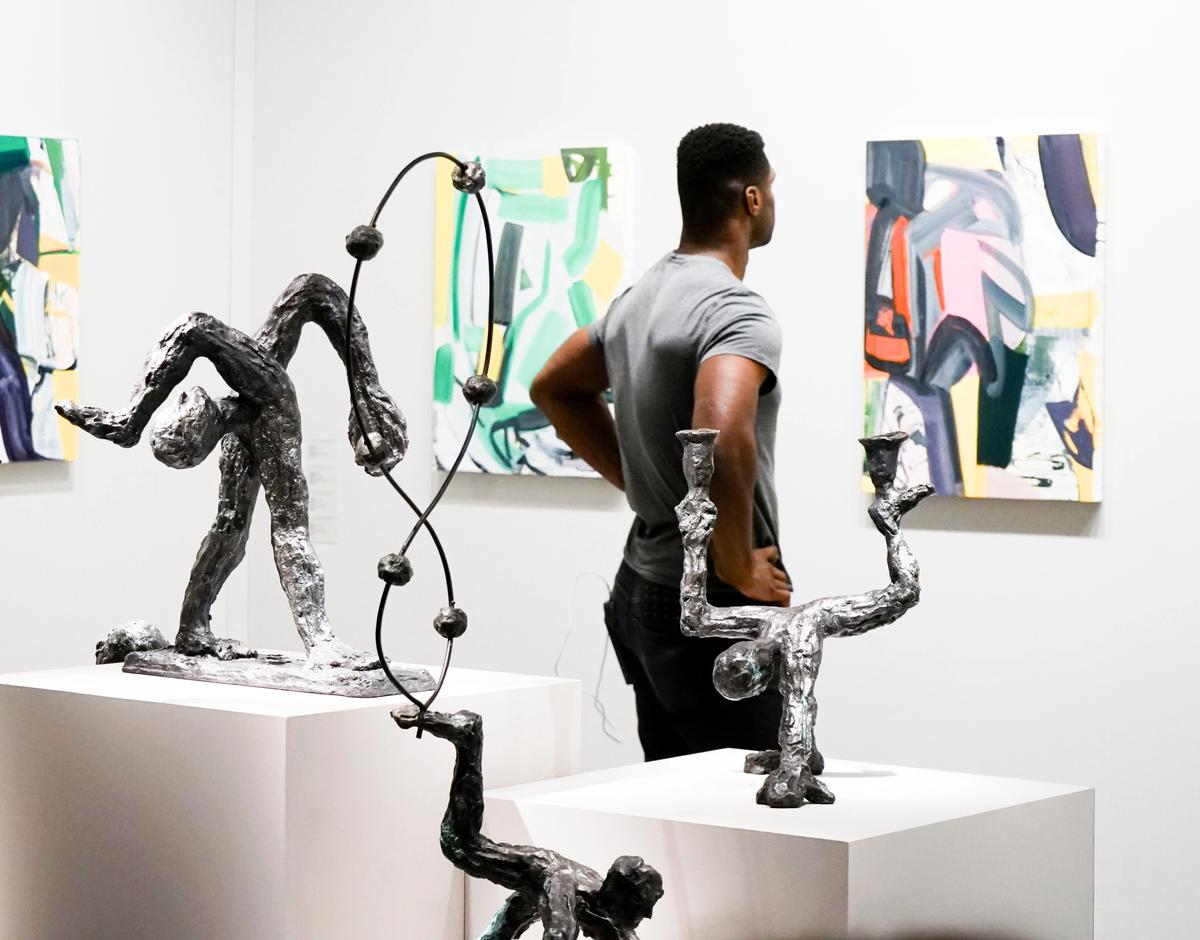Evidently, for Tefaf New York, everyone’s a VIP. At least, that’s how the fair appeared at its second spring edition’s First Look preview. The Park Avenue Armory was jammed from the jump. In terms of collector experience, their average age – generally north of 50 – the crowd’s Eurocentric/American character and the price tags, no fair in New York ever has felt more like Art Basel.
Of course, with just 90 exhibitors, it’s a lot smaller, as are the stands. Dealers like Larry Gagosian, Barbara Gladstone, Richard Gray and Marian Goodman – all among Tefaf New York’s 24 “newcomers” – smartly focused their presentations on one or two artists, and had the best-looking booths. Clarity counts at a clusterfuck!
David Zwirner, for example, dove into his inventory only for small, bright-red homages to the square by Joseph Albers and similarly sized but more muted still-life paintings by Giorgio Morandi. “It’s clean!” he agreed. “If people want dirty, they can go to the gallery for Jordan Wolfson, yellow pee and all.”
Indeed, for all the beautiful objects at the fair – a wall piece by Doris Salcedo at White Cube was one – dealers err on the side of restraint, not risk. That may befit the Park Avenue setting, but for this edition the fair also tried to wrangle exhibitors into bringing mainly 20th-century art. This is what accounted for a greater number of contemporary galleries than last year’s outings, when the fair tried too hard to mimic the flavour of the flagship in Maastricht.
Not that there weren’t opportunities to make precipitous leaps of millennia. “That’s what I love about this fair,” said Gladstone, whose show of Andrew Lord bronzes and Amy Sillman abstractions sat opposite the living room-sized Greek and Roman antiquities that Cahn International displayed across the aisle. But alone among all the dealers, Peter Freeman managed to mix works from the 17th through the 20th century – and to felicitous effect.
Authenticity is a big deal here, too. Prior to the opening, the fair brought in no less than 168 experts to inspect everything on show. But like I said, this is not a fair where people take chances.
Unless you count Gmurzynska Gallery, which always goes to great lengths for the sake of presentation. This time, it brought in the theatre designer Robin Scott-Lawson to clear away the hunting trophies in its period room and build it into a soft gray lounge, complete with a pink-cushioned conversation pit.
But the day also saw a great meeting of minds as well as styles. It was fun to see Maurizio Cattelan and Danh Vo squire Goodman through the aisles, delightful to be in a place where the likes of Eli Broad, Pauline Kapridas, Anne Bass, Lisa Dennison, Andy and Christine Hall, Tobias Meyer and Mark Fletcher, Michael and Eileen Cohen, and Debra and Dennis Scholl could all find something to shout about (if quietly). Brice Marden was on hand at Gagosian before lunchtime; John Currin came in afterward.
Perhaps the greatest reason for the number of attendees was the fair’s central, midtown Manhattan location. It was also relatively cooled by air-conditioning, a blessing noted by every single person there who had been tortured by the swelter of Frieze New York’s tent the day before.
The biggest drawback on preview day was the near-total absence of food and water. (Restaurants will be open for the public days.) That made the opening of Kurimanzutto Gallery’s new project space a couple of blocks away literally a piece-de-resistance. Gracious hosts always, Jose Kuri and Monica Manzutto offered scrumptious tacos from Cosmé, along with a head-banging installation of low-hanging, food-and-painted wood mobiles by the 21st-century Mexican Abraham Cruzvillegas, constructed in homage to the 20th-century Brazilian Hélio Oiticica. “It’s all about geometry and colour, and life in the favelas,” Manzutto explained.
For the many fairgoers who stopped by, it was all about life in Manhattan. Which is not to be confused with art.


